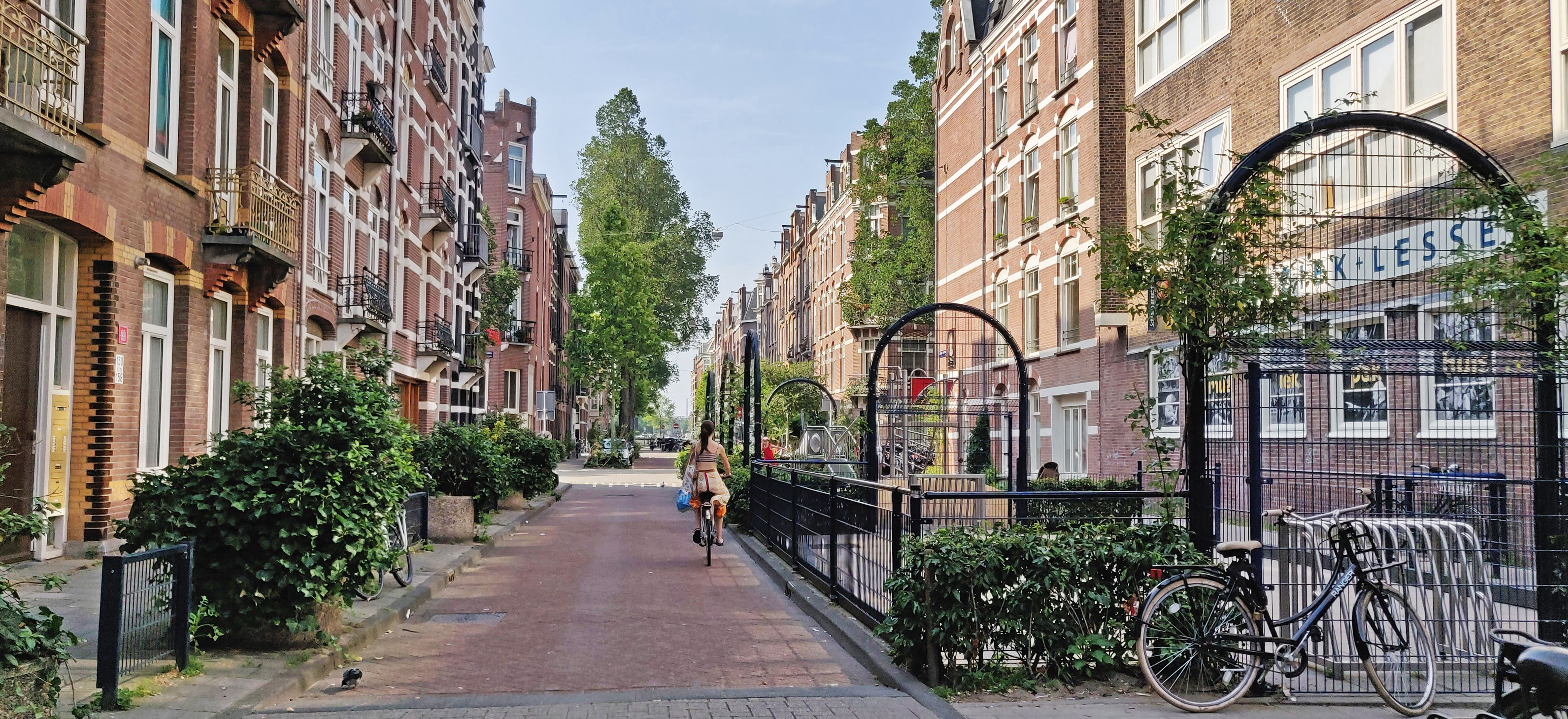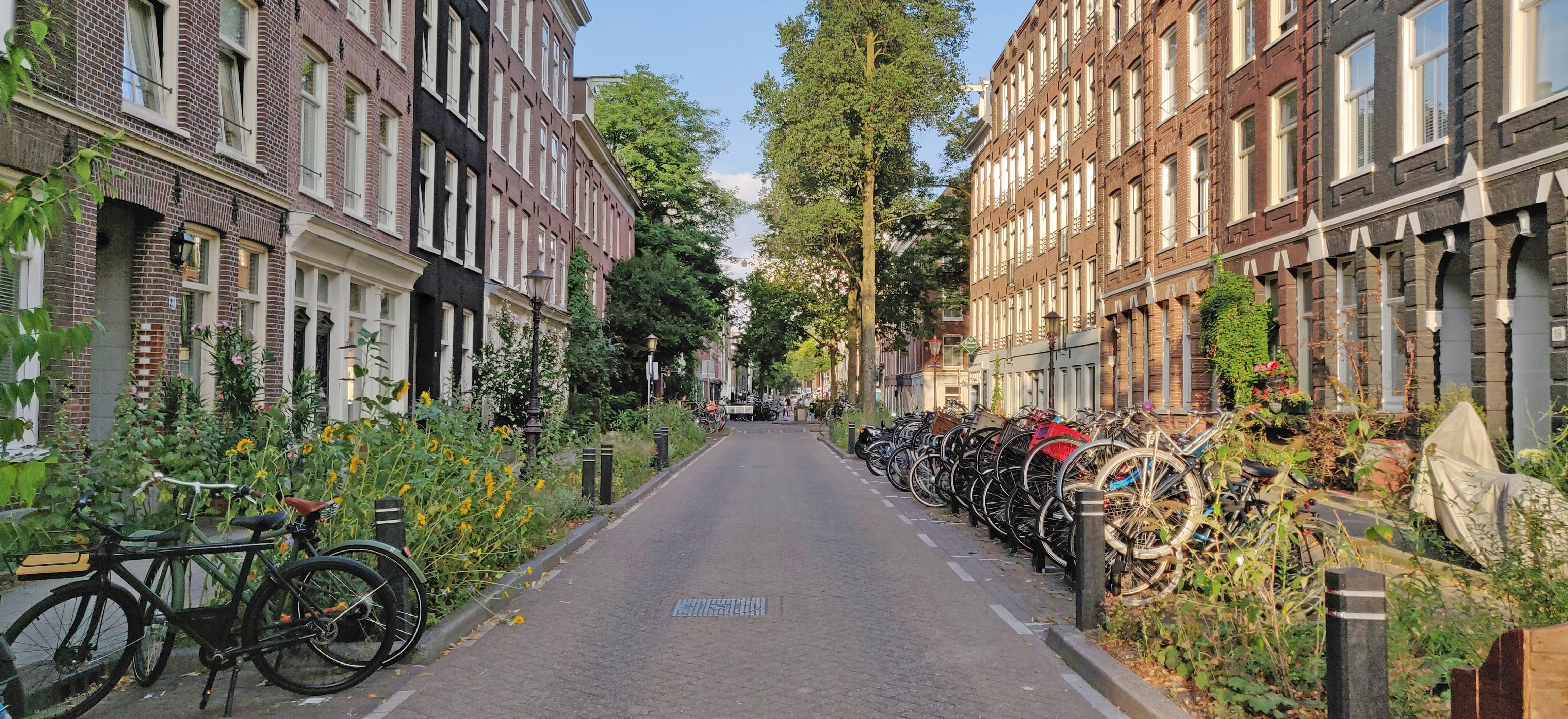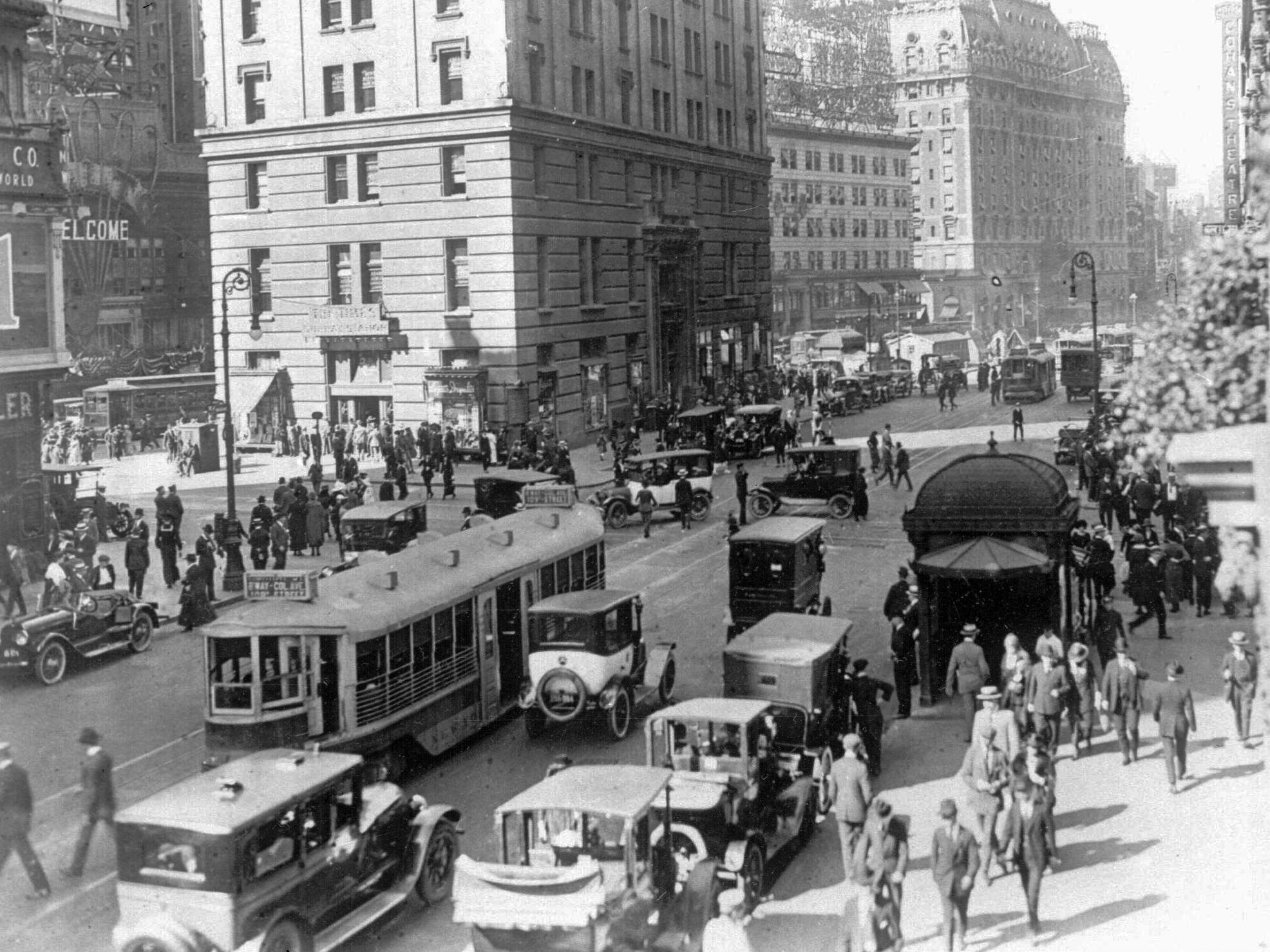Being a Pedestrian sucks in America... but so does Driving.
"Pedestrians shouldn't be near the road... Entitled guy is just taking his sweet time crossing the street. Can't they move any faster? I have things to do." "Looks like that guy needs to cross the street... I don't have time to stop right now." "The actual nerve of that biker, He's gonna get himself killed." This is the prevailing attitude of the average car driver. I've felt it, and I'm not an angry driver. I just feel immensely inconvenienced by the people trying to cross the street.
This attitude actually stems from extremely poor road designs, not bad drivers. Our road structure is unclear to both driver and pedestrian, slow and dangerous.
This attitude is so pervasive, for a long time, I actually felt I was in the wrong if I wanted to peacefully cross the street when I was the pedestrian. This is why you often see people scurry across the road like animals if a car stops for them at a zebra crossing. Pedestrians are being run over and killed or injured constantly on the road.
Most campaigns to save children on their walks to school are simply, "Watch out. Pedestrians are more vulnerable than you." As well meaning as it is, it's ineffective campaigning. People don't head on their daily commute to hit a 6 year old on their way to school. What's the real solution? Well, change the roads. A car is only going to go slower if you force them to through road design with physics. Make roads thinner, instead of forcing pedestrians to go up and down sidewalk curbs, make pedestrian walkways flat and wide. Use physics to force cars to drive up onto a pedestrian crosswalk. Create entire areas where only pedestrians and bikes are allowed. Which frees up space for safe commutes and other beautiful amenities such as parks, housing, businesses, and sitting areas. This is the only way to protect pedestrians.
(Area closed off for only bikers and pedestrians for quicker travel through city. Complete separation. Notice how the path is completely flat, wide and unobstrucuted for the biker, they don't have to go up and down like American sidewalks.)

(1)
(Beautiful street. Outside edges are for beautification and greenery rather than another lane. Bikes and cars can share this street, but cars are forced to slow down with proper design. Love the hundreds of bikes parked next to housing. It's clear the mode of transportation people prefer in this well designed city.)

(2)
But I Want to Move Quickly With my Car!
Yes, when I'm in a car, I also want to move quickly. Unfortunately, because road designs begrudgingly work around pedestrians instead of for them, our current car centric designed roads not only slow down traffic, they are still killing pedestrians. Both get the short end of the stick. Jason Slaughter and Charles L Marohn Jr have insight on this issue.
Car Centric Roads... plus annoying pedestrians
In America, we want the car to zip through as quickly as possible, but there are laws for local pedestrian traffic. This leads to frustration on both ends as cars are dying to move through traffic, and brave pedestrians are trying to not get killed on crosswalks. To create a compromise, we made the "stroad" What, author Charles L Marohn Jr coins as the combination of a street and a road. The look of a street, but the speed of a road.
Streets: are for the protection of people, local public transportation and high density business or housing. They are thinner, with very slow but continuously moving traffic.
Roads have high speeds, and are meant to move traffic quickly, with little interference.
(This is a stroad. Wide, (high speeds), slow, and very often hideous. Businesses suffer in the environment, because it's far too difficult to cross the street in a high traffic stroad to be worth it.)

(3)
(One of the last streets in historic downtown Provo. Thinner, and slower. It is specifically designed to slow down traffic for the pedestrian. The charm of this area has not been demolished yet. Local businesses are thriving from foot traffic. (Though to be a truly effective street, there would only be one lane and the second lane would likely be a wide bike lane for easy moving and safe cyclists. This street unfortunately ends in a stroad.))

(4)
(Street in the Netherlands. Notice that most of the space is being used for public transportation on the right side. Lanes are thin to make pedestrians safer. Heavy foot trafficked area.)

(9)
(Netherlands Road. Continuously moving. Uncomplicated. Fast paced. There is less car congestion because pedestrians are prioritized, and so less people want to drive.)

(5)
Stroads are so very slow and infuriating.
There are thousands of stroads all over Utah. They are wide with high speeds, and are dangerous for both driver and pedestrian. People think, "Well if it's faster, and allows more cars, it will be quicker." Not so. Despite their "high speeds", these are incredibly ineffective at moving traffic, as they make the car stop every couple 100 yards for pedestrian cross walks, lights and oncoming traffic.
From the book, "The confessions of a recovering engineer: Transportation for a Strong Town" by Charles L Marohn Jr, he found that although his speed limit to work was 50 mph, he discovered that his overall macro speed on the stroad, if he were to drive and never stop, was 10 mph. Whoa... not as speedy as we hoped. That is a lot of frustrating high speed starting and stopping. Not only is this incredibly frustrating for the driver if he hits 5 red lights in a row, it's often absolutely awful for the pedestrian. Because they want traffic to move, road designers try to stretch the light as long as possible. Pedestrians have to sometimes walk incredible distances just to get to the next crosswalk, and often turn back around to get to the businesses they were trying to access on the other side. Most people would rather avoid walking next to a mini highway, and triple their distance, so they just take their car, adding to the traffic.

(5)
Got anything better? Thankfully, yes.
Jason Slaughter, author of the Youtube channel "Not Just Bikes" has a better solution. Instead of sticking stroads in the middle of cities in every place imaginable, he suggests we do what the Netherlands does. Create more streets for pedestrians and make roads on the outskirts of town. Get rid of stroads entirely.
(Dutch street with plenty of foot traffic, bikers and two separate lanes for opposing traffic. Notice the lack of car traffic, people are instead outside using alternative modes of transportation because it's available.)

(6)
A road is explicitly designed to move cars as quickly as possible, with very little interference. Any type of pedestrian infrastructure near a road is often completely separate and safe from high moving vehicles. The roads that go around the city are a longer distance for the car, but in the end, they get to their destination quicker because instead of stopping every 30 seconds for a light, they zip through, barely encountering a roundabout or light until they get to the freeway or to a specific part of town. Overall speeds on roads is 30-50 mph rather than 5-10 mph on a stroad. That's a huge difference. Not only would this type of design avoid car infestation in the middle of the city, people can get to their destinations faster without infuriating traffic, and dreaded red lights. Or forbid, a car has to wait for a mother to walk across the street with her baby. Cities are unscathed, able to use space effectively, get rid of excess parking lots, and reduce sound pollution.
Check out Jason's channel! He's pinned the successes of Amsterdam's road design, which makes driving easier, faster, and also safer for the local pedestrian.
(Road around town that has very little stop and go, with separated bike path.)

(7)
Pedestrians
Not only do car drivers have to deal with more traffic, pedestrians get the serious short end of the stick with longer and more inconvenient routes, dangerous crossings, and loud commutes. The less pedestrians are welcome outside, the more people rely on cars, the more traffic there is. Almost everything about our car infrastructure is centered away from the pedestrian. Even in suburbia with very little car traffic. You'll often find that sidewalks simply don't even exist on some parts of the neighborhood. The pedestrian must walk on the wide asphalt road, keeping a weary eye on coming traffic with their children. Or the sidewalk takes an incredibly inconvenient winding way to whatever destination you're trying to get to, doubling your route. I have even seen driveways cutting into the sidewalks with butts of their cars. Any person bicycling or walking has to swerve off the sidewalk to avoid the car. Amazingly, when the local church or school is only 2-3 blocks away, you'll still see people drive because everything about the neighborhood infrastructure is disenchanting and inconvenient for the cyclist or walker.
Nobody wants to walk
"I don't like walking." Well, maybe you just don't like walking or cycling in our current infrastructure. Because at every turn, it's far more inconvenient for you. In pedestrian heavy spaces with mixed zoning, the sidewalks do not have curbs in which a person must trek up and down at every intersection. They are wide and flat and made to get you to your destination quickly. For example, in Saratoga Springs one of the most un-walkable cities in Utah, if you wish to get anywhere, you must take the slim sidewalk next to the speedy and wide stroad, Redwood Road. The sidewalk winds back and forth, as well as up and down while the road next to it cuts straight ahead. If anyone wishes to ambitiously bike to do an errand north or south of their house, sure there's a slim sidewalk now, but now you have an incredible workout ahead of you as you bike up and down, doubling or tripling the time it would have taken to get there with a straight and flat path. You are biking next to a mini-freeway, loud and unsightly. There are no easily placed short cuts to get to places quicker. You must wait at the light, and likely having to turn around because there were no places to cross. Communities have fences on them, so you have to go all the way to the end of the block, following the road. The only access through these communities are through the roads. Or you the pedestrian must make sure nobody's making a left turn while you cross. In mixed cities, streets next to pedestrians are either completely separate, or the car traffic is slow enough that people can safely cross at any point. The roads are for quickly moving traffic. The views, time and sweat aren't worth the hassle to walk or bike in Saratoga Springs. Why would anyone prefer this?
(This is what Saratoga Springs looked like in 2012 when I was going to High School. (High school is on the left) The road was 50 mph. No sidewalk. The traffic was insane during school morning hours and highly dangerous. I was a 15 minute bike ride away... it never occurred to me to take a bike. Incredibly uninviting, and felt unsafe. I drove 4-7 minutes every day, adding to traffic. The grocery stores, smith and Walmart were almost impossible to get to walking or cycling. Residents relied solely on a car. Starting point if you were close, 8-10 minute drive with zero traffic.)(With traffic 12-16 minutes)
This is what America Wants.
Maybe not. As I'll get into with another entry, it wasn't always like this. In fact, Americans preferred their walkable and bike-able infrastructure, and were concerned about excessive car traffic and pedestrian death.
Notice this pre-world war American city where thousands of people are walking. Public transportation is available, and car traffic is slow enough that people can move through to their destination as quickly as possible. We could clearly design this better and other countries have, as cars are not a brand new convenience, but the point is, America thrived in these kind of environments. They preferred them and we can return to them, better than before.

(8)
Citations
(1)https://mobycon.com/updates/healthy-streets-and-how-the-dutch-build-them/
(2)https://mobycon.com/updates/healthy-streets-and-how-the-dutch-build-them/
(3)https://www.thedrive.com/news/43700/an-argument-against-stroads-the-worst-kind-of-street
(4)https://en.wikipedia.org/wiki/Provo_Downtown_Historic_District
(5)https://www.strongtowns.org/journal/2018/2/15/how-to-turn-a-stroad-into-a-street-or-a-road
(6)https://www.hotels.com/go/netherlands/nl-most-popular-streets-amsterdam
(7)https://bicycledutch.wordpress.com/2014/05/15/denbosch-before-and-after/
(8)https://www.npr.org/sections/thetwo-way/2013/10/22/239870539/the-sounds-of-new-york-city-circa-1920
(9)https://www.hotels.com/go/netherlands/nl-most-popular-streets-amsterdam


